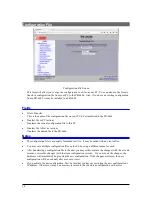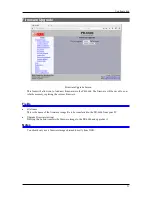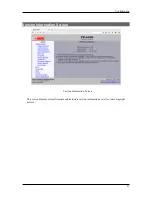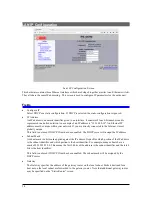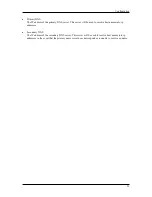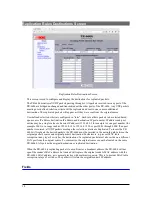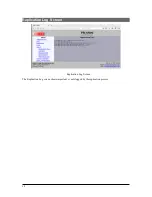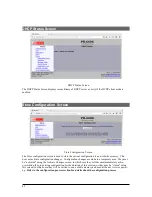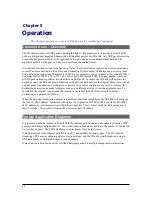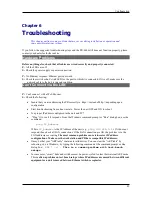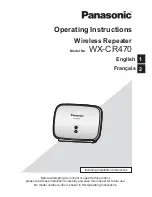
Replication Rules Destinations Screen
Replication Rules Destinations Screen
This screen is used to configure and display the destinations for replicated packets.
The PR-6606 monitors all UDP packets passing through it. All packets received into any port of the
PR-6606 are bridged unchanged and transmitted out the other ports of the PR-6606. Any UDP packets
meeting user-defined selection criteria will be replicated and sent to one or more additional
destinations. The replicated packets will appear as if they were sent from the original source.
User defined selection criteria is configured in "rules". Each rule allows packets to be selected based
upon source IP address, destination IP address, and destination IP port number. IP address and port
entries may be a single value such as one IP address (192.168.2.2 for example) or one port number (for
example 3001) or a range such as 192.168.1.2 to 192.168.1.230 or port 5001 through 8000. If no port
number is entered, all UDP packets meeting other selection criteria are duplicated. To insure the PR-
6606 will replicate the desired packets, the PR-6606 must be inserted in the network path between the
original packet's source and original packet's destination. Furthermore, to prevent MAC table
corruption in any layer-2 switches, the destination of a replicated packet must also reside on a different
LAN port from the original source. To summarize, the original source cannot be located on the same
PR-6606 LAN port as the original destination or replicated destination.
When the PR-6606 is replicating packets to a multicast or a broadcast address, the PR-6606 will not
spoof the sender's MAC address, but instead will replace the original sender's MAC address with the
PR-6606's MAC address, as is normal practice with multicast repeaters. This is to prevent MAC table
corruption in layer-2 switches. The packet will retain the original sender's IP address.
Fields
30





